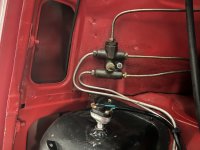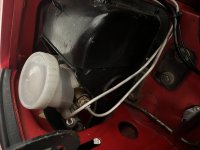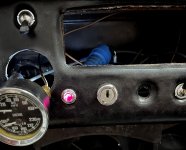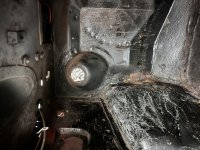Hi,
I have owned my 1966 B for two weeks, I am not a mechanic. I have never worked on cars. I am having fun driving the car, I have learned that sun screen lotion is important for anyone driving a convertible in the summer. I have also learned that my wife can spot a drop of oil before it hits the garage floor.
So the rumors of early MGBs constantly weeping fluids is a true statement for my car. I have a piece of cardboard under the car and it is saturated with fluid.
Today's question is, what is this?
Can the leak be stopped?
Why is there an electrical terminal in the center.
My car is probably a Frankenstein, so the parts might not be 1966 specific.
Any help would be appreciated.
Thanks,
John


I have owned my 1966 B for two weeks, I am not a mechanic. I have never worked on cars. I am having fun driving the car, I have learned that sun screen lotion is important for anyone driving a convertible in the summer. I have also learned that my wife can spot a drop of oil before it hits the garage floor.
So the rumors of early MGBs constantly weeping fluids is a true statement for my car. I have a piece of cardboard under the car and it is saturated with fluid.
Today's question is, what is this?
Can the leak be stopped?
Why is there an electrical terminal in the center.
My car is probably a Frankenstein, so the parts might not be 1966 specific.
Any help would be appreciated.
Thanks,
John



 Hi Guest!
Hi Guest!

 smilie in place of the real @
smilie in place of the real @
 Pretty Please - add it to our Events forum(s) and add to the calendar! >>
Pretty Please - add it to our Events forum(s) and add to the calendar! >> 



